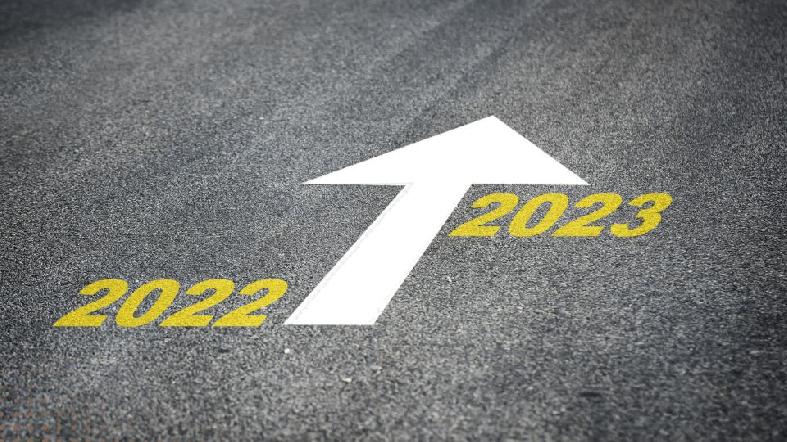
What HR Must Do to Get Ready for 2023
Are You Hiring?
Find candidates in 72 Hours with 5+ million talents in Maukerja Malaysia & Ricebowl using Job Ads.
Hire NowIn 2022, everyone is still reeling from the effects of COVID-19.
Most of us have spent the last year or two adjusting to remote and hybrid work arrangements. This has brought its own issues, such as managing leave allocations, tracking attendance, conducting performance assessments, and holding frequent meetings.
However, via digitisation, organisations have been able to get by with an eye on a more promising year ahead in 2023.
Before you relax for the holidays, here are the responsibilities that every HR professional must accomplish before the year 2022 concludes.
1. Plan for public holidays in 2022
The government has already confirmed the national and state public holidays for 2023. You can download the list of public holidays in 2023 here if you haven't already.
It's also a great idea to send it out to your staff so you can help them plan for the next year. This includes manpower planning for specific festive or busy periods, but it can also help your staff schedule their vacation in advance, eventually leading to minimal business disruption.
You should also check out these long weekends in 2023.
Other than sending out a memo, you can also create a calendar. It's much easier if your organisation has a shared calendar, like Microsoft Teams or Google Calendar.
2. Update leave policies as well as entitlements
Additionally, you should take note of the total number of leaves that employees have used this year, any outstanding balances, and the various leave policies.
For instance, as the new year begins, sick and hospitalisation leave allocations will be renewed. This is typically covered in employment agreements made at the start of a term, whereas employees protected by the Employment Act are entitled to:
-
14 days per year if they are employed for less than two years
-
18 days per year if they are employed between two to five years
-
22 days per year if they are employed for five years or more
Most companies, if not all of them, do not permit sick or hospitalisation leave to be carried over. If your HR department hasn't already been digitalised using HR software, you'll need to manually update allocations in any databases or systems you may use to manage employee leave entitlements.
Meanwhile, take advantage of the end-of-year period to review all leave rules and renew all entitlements on your chosen HR system.
3. Inform employees about carry-forward leave policies.
What happens if an employee has unused annual leave at the end of the year? Employees protected by the Employment Act of 1955 can only use the leave days acquired over 12 months of continuous service within the next 12 months. Otherwise, the leave will be forfeited.
Meanwhile, employees not covered by the Employment Act must review their employment agreements for policies on carry-forward leave. Please be aware that carry forward is only an employee benefit and is not required under the law.
Before the end of the fiscal year, HR professionals should take note of all company leave rules and provide all essential information regarding carry-forward leave policies to staff, such as:
-
There is a cap on the number of unused annual paid holidays that the staff can carry forward to 2023.
-
The deadline for using the carry-forward leave in 2023 has passed.
You can find more information on Annual Leave here.
4. Yearly performance evaluations
Ensure that your staff have had their yearly performance reviews or that their appraisals have been arranged with the appropriate supervisors. It would be best if you did this as soon as possible because performance reviews are essential considerations in possible raises, increments, annual bonuses, and promotions.
As we approach 2022, it's also worth mentioning that more companies worldwide are embracing the benefits of regular and informal feedback, which means that staff are being reviewed more regularly.
For 2022, consider scheduling check-ins monthly, biweekly, or weekly. This guarantees that everyone is on the same page regarding commitments and performance and that no unpleasant surprises await staff at the end of the year.
5. Utilise HR software to monitor policies and improve communications with staff.
Manually tracking employee payroll, leave entitlements, and performance reviews can be difficult for companies and HR professionals, but it doesn't have to be.
This is where HR software may help. Most HR software has capabilities that assist you in keeping track of your staff leave policy, requests, and allocations.
Daily, HR professionals are confronted with challenging, often tiresome activities, which have become much more difficult to manage in light of the current COVID-19 crisis.
However, assistance is accessible if you know where to find it. HR software can help you optimise your HR procedures by handling and streamlining day-to-day duties.
You don't have to worry about paperwork time tracking, privacy concerns, or onboarding difficulties.
Visit the HR Library to acquire all relevant HR resources.
Find out more about hiring staff here.
Contact here for more information on hiring employees.

